What are mini ball bearing drawer slides?
Mini ball bearing drawer slides are precision sliding devices designed for small drawers. The core principle is to convert sliding friction into rolling friction through densely arranged steel or ceramic balls (usually 20-30 balls per track), thereby significantly reducing the drag coefficient (as low as 0.001-0.005). The compact design of this type of slide is reflected in its miniaturized structure: the width is usually controlled between 17-20mm, and the thickness can be compressed to 3/8 inches (about 9.5mm), which is particularly suitable for scenes with limited installation space. For example, in the design of jewelry boxes, its slimness allows it to be hidden inside the side panels without affecting the appearance; in CD storage cabinets, the low friction characteristics can be easily pushed and pulled with one hand. High-end models also use a split track design, allowing the mini ball bearing drawer slides to be completely detached from the track for maintenance.
In terms of material, steel ball bearings have higher compressive strength (single ball can bear up to 50N), while ceramic beads are more popular in medical equipment or laboratory environments due to their self-lubricating properties and corrosion resistance. Some industrial-grade products will also add a galvanized layer or Teflon coating on the surface of the track to further improve wear resistance (laboratory tests show that the galvanized layer can extend the service life by about 40%).
What is the difference between mini ball bearing drawer slides and traditional slides?
Structural differences:
Traditional slides (such as wooden guides) rely on sliding friction of flat contact, with a friction coefficient of up to 0.1-0.3, while ball slides reduce friction by more than 90% through point contact of the spheres. Taking the test data of the Blum Tandem series as an example, its starting force is only 0.6N·m, and the operating noise is less than 30 decibels, which is significantly better than the 50 decibels of traditional slides.

Load performance:
The mini ball bearing drawer slides adopts a double-row ball matrix design. The static load-bearing capacity of the steel model can reach 10 kg (such as Hettich Quadro) and the dynamic load-bearing capacity is 5 kg; the aviation aluminum alloy model (such as GRASS Slimace) can increase the load-bearing capacity to 20 kg by increasing the track wall thickness to 1.2 mm. In contrast, the load-bearing capacity of traditional plastic slides usually does not exceed 2 kg.
Installation innovation:
Mini slides introduce “pre-slotted embedded installation” (Mortise Installation), which requires a 2-3mm deep groove to be cut in the side panel of the furniture so that the slide is completely embedded in the board. This method not only maintains a smooth appearance, but also enhances stability through the mortise and tenon structure. Traditional slides are mostly surface mounted, which is prone to displacement due to loose screws.
How to choose the appropriate mini ball slide size?
Length matching principle:
The relationship between the inner net depth of the mini ball bearing drawer slides (N) and the length of the slide (L) should satisfy: L = N – (2×gap). For example, a 300mm deep mini ball bearing drawer slides needs to choose a 280mm slide (with a 10mm gap reserved). Pay special attention to the actual extension length of the three-section rail: a 12-inch slide can reach 24 inches when fully pulled out, but a 50mm space needs to be reserved at the back.
Material selection guide:
Cold-rolled steel rails (such as Hettich) have a surface hardness of HRB 80 and are suitable for frequently used office furniture
Anodized aluminum alloys (such as Accuride 3832) can withstand 500 hours of rust in salt spray tests and are suitable for seaside residences
Nylon composite rails are 40% lighter, but the temperature resistance is limited to -20℃~80℃
Extension type comparison:
Single-section rails (such as KV 8400) have an opening angle of 85° and are suitable for front-opening medicine cabinets
Double-action rails (such as Salice SL08) use an X-shaped cross structure to achieve 100% full expansion, which is convenient for storing and accessing deep items

What issues should be paid attention to when installing mini ball bearing rails?
Precision calibration steps:
Use a laser level to ensure that the track parallelism error is ≤0.3mm/m. It is recommended to use the “three-point positioning method”: first fix the rear end of the track, adjust the front end height, check the gap with a feeler gauge, and finally tighten the middle screw. For flush installation, a template milling cutter (such as Festool 495386) is required to accurately groove.
Mechanical adaptation requirements:
Bottom-mounted slides (such as Blum Movento) require a drawer bottom plate thickness of ≥12mm and are reinforced 5mm from the edge. Side-mounted slides require torque balance calculation: When installing a single track, the center line of the track should be located in the vertical plane of the mini ball bearing drawer slides’s center of gravity to prevent tilting.
Fastening system selection:
Self-tapping screws (#6×12mm) are suitable for medium-density fiberboard and require pre-drilling of 2.5mm pilot holes
Threaded inserts (such as PEM S-632) with M4 machine screws can provide a tensile strength of 200N
32mm system-specific slides must be used with a row drilling template
How to maintain and repair mini ball slides?
Deep cleaning process:
Use compressed air (pressure <0.3MPa) to blow the track every month, and use precision electronic cleaner (such as CRC 05106) to dissolve oil stains. Stubborn dirt can be cleaned with a bamboo scraper (hardness lower than the track material), and metal tools are prohibited to avoid scratching the coating. Scientific selection of lubricants: Silicone grease (such as Dow Corning 111) is suitable for -40℃~200℃ environment PTFE dry film lubricant (such as DuPont Teflon) does not stick to dust and is suitable for food-grade environment Graphite lubricating rods perform well under high temperature conditions, but may contaminate light-colored furniture Fault diagnosis: Abnormal sound → Check the straightness of the track (deviation >0.5mm needs to be corrected)
Stuck → Measure the ball diameter, wear more than 0.1mm needs to be replaced as a whole
Poor rebound → Check the spring tension (standard value 4-6N/cm)
Is the load capacity of the mini ball slide sufficient?
Dynamic fatigue tests show that:
Steel rails (such as King Slide S10) have a displacement deviation of <0.2mm after 50,000 push-pull cycles under a load of 5kg
Aluminum rails (such as Hettich Sensys) have a life cycle of up to 150,000 times under a load of 10kg
Special designs such as reinforced cages can reduce the ball spacing to 1.5mm and increase the load-bearing capacity by 30%. However, for storing heavy objects such as metal tools, a three-point load-bearing system of “double rails + center support” is recommended.
Can a rail be installed on one side?
According to the moment balance formula:
Single rail load-bearing capacity W = (M×L)/(K×H)
Where M is the material bending modulus, L is the rail length, H is the installation height, and K is the safety factor (taken as 1.5). Take Accuride 1522 as an example:
When the 300mm long slide rail is installed on one side, the maximum load is 8kg
It is necessary to add nylon sliders (such as IKEA Utrusta) at the diagonal position of the drawer as auxiliary support
When the mini ball bearing drawer slides width exceeds 250mm, double rails must be used to prevent distortion


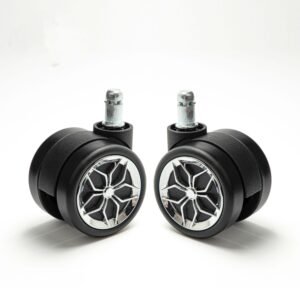
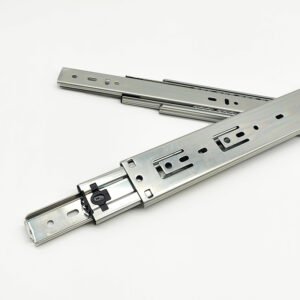
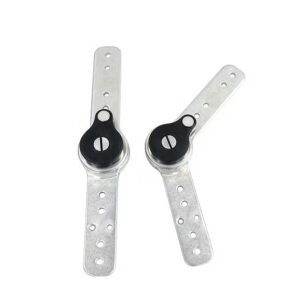
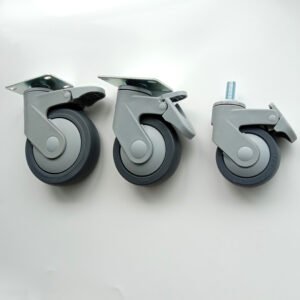

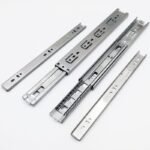
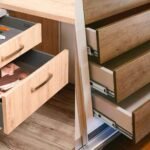
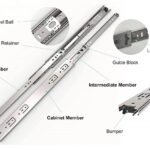
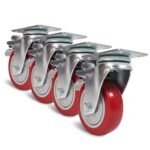
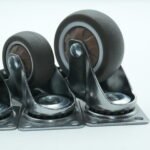
Leave a Reply